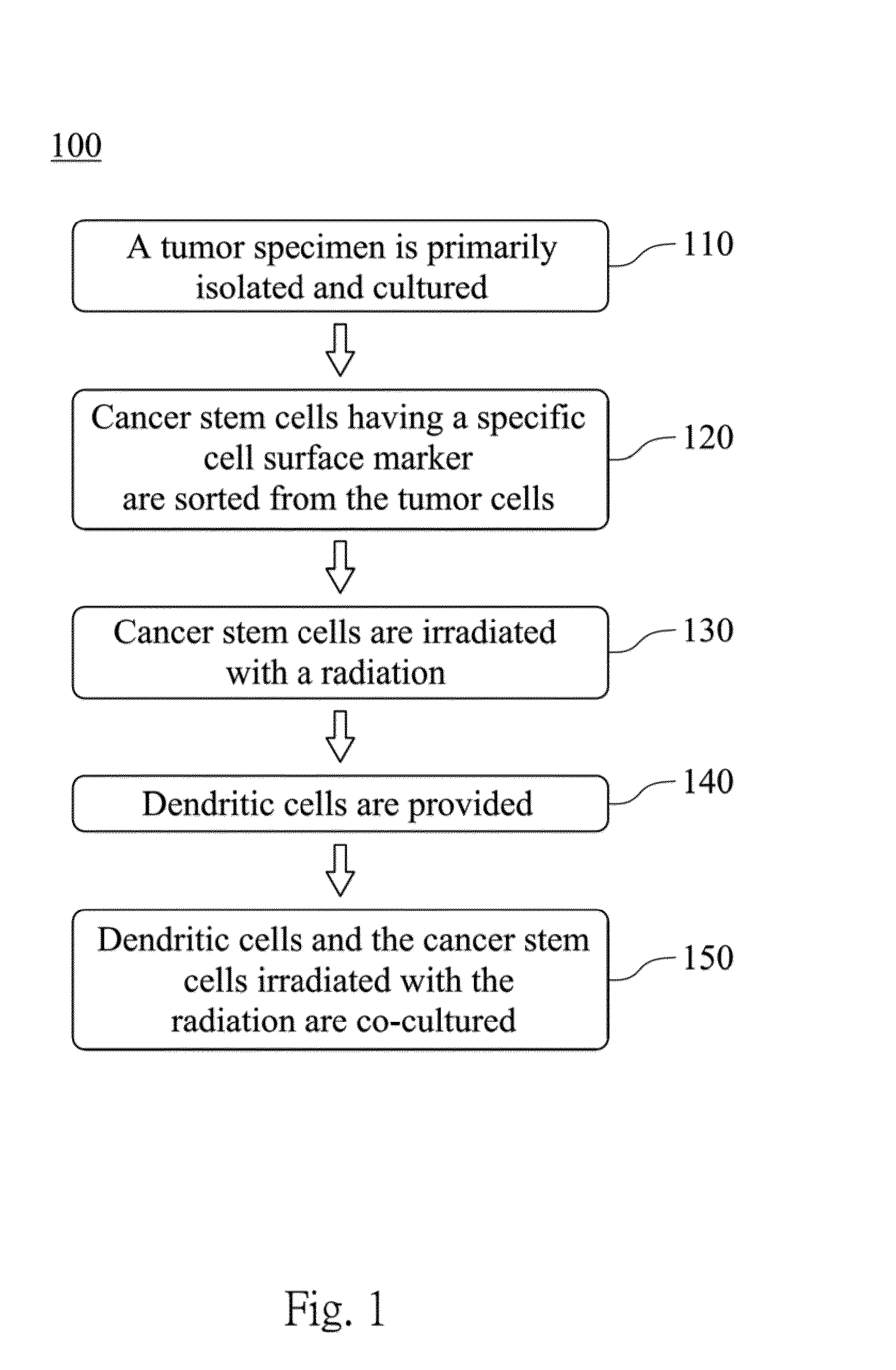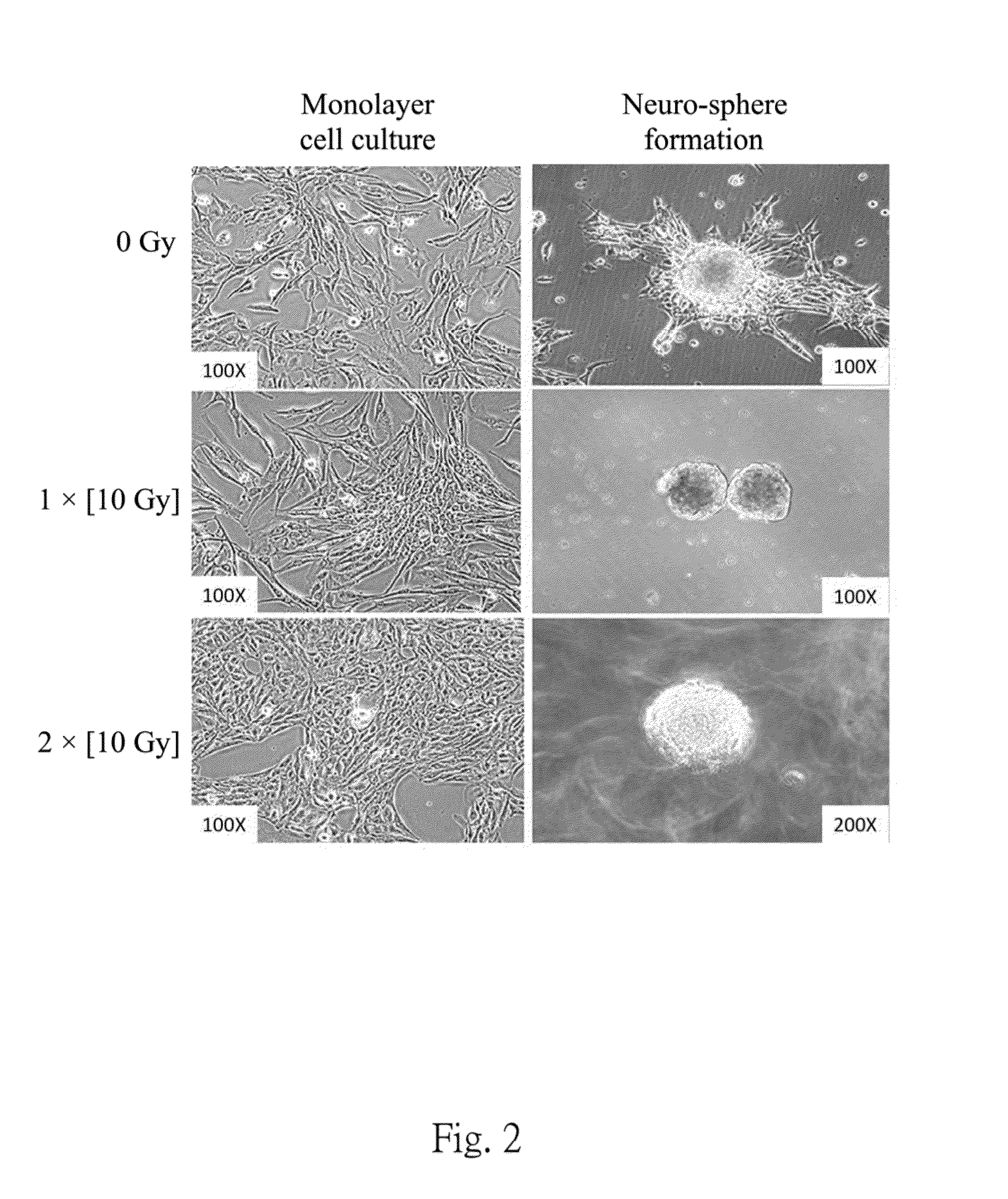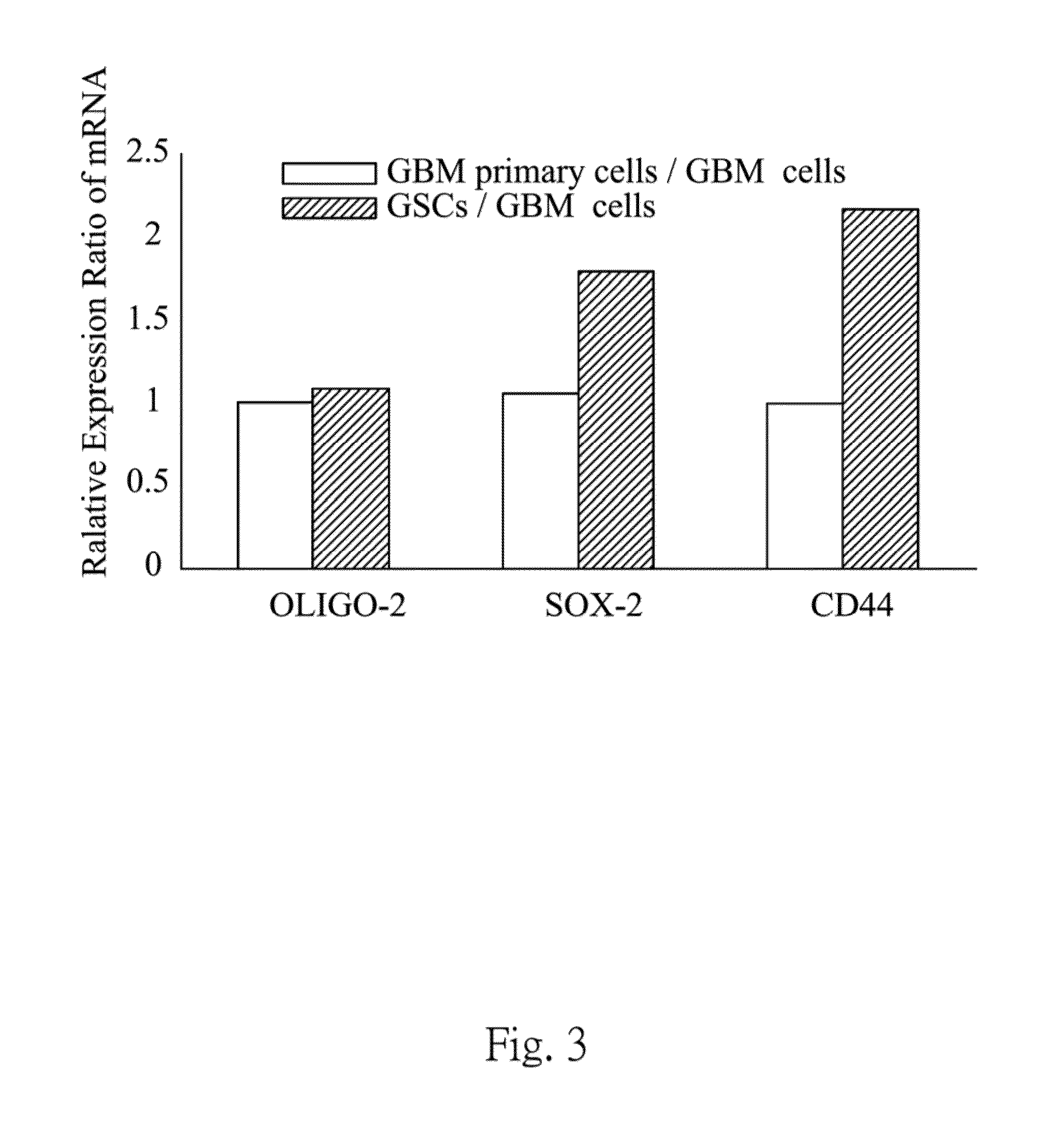Dendritic cell tumor vaccine and method for preparing the same
a tumor vaccine and dendritic cell technology, applied in the field of tumor vaccines, can solve problems such as difficult to solve the problem of tumor recurren
- Summary
- Abstract
- Description
- Claims
- Application Information
AI Technical Summary
Benefits of technology
Problems solved by technology
Method used
Image
Examples
example i
Isolation and Cell Culture of Glioblastoma Stem Cell
[0036]In a first step, GBM specimens are collected. The GBM specimens are washed and chopped into pieces in saline solution, and then disaggregated by using the Papain Dissociation System (WORTHINGTON BIOCHEMICAL) so as to obtain disaggregated GBM cells. In a second step, The disaggregated GBM cells are then resuspended and recovered in stem cell medium (Neurobasal-A medium with B27 supplement, 10 ng / ml EGF (epidermal growth factor) and 10 ng / ml bFGF (basic fibroblast growth factor)) for at least 6 hours to allow re-expression of surface markers. The disaggregated GBM cells are labeled with an allophycocyanin-conjugated or phycoerythrin-conjugated CD133 and CD15 antibodies (MILTENYI BIOTEC. Inc.), and then sorted by fluorescence-activated cell sorting (FACS) or magnetic cell sorting. Thus the glioblastoma stem cells (GSCs) with CD133 cell surface marker and CD15 cell surface marker are sorted from the disaggregated GBM cells. The G...
example ii
Characterization of Glioblastoma Stem Cell
[0037]The GSCs population are further confirmed by in vitro test and in viva test. In vitro test, the GSCs population are characterized by neuro-sphere formation assay, gene expression assay and immunoblot analysis. In viva test, the GSCs population are evaluated tumorigenicity by an intracranial xenograft mice model.
(1) Neuro-Sphere Formation Assay
[0038]A neuro-sphere formation assay is represented as the GSCs population on day 0 to confirm the cancer stem cell property. The neuro-sphere formation assay is obtained by plating at a density of 3×108 live cells / per 60-mm dish. After GSCs sphere formation is noted, sphere cells are isolated and plated in 96-well microwell plates in 0.2 ml volumes of the stem cell medium. Final cell dilutions ranged from 200 cells / well to 1 cell / well in 0.2-ml volumes. Cultures are fed 0.025 ml of the stem cell medium every 2 days until day 7, then calculate a number of cells required to formed at least one neu...
example iii
Preparation of Dendritic Cell
[0045]The sources of dendritic cells are differentiated from PBMCs. PBMCs are collected from the same patient who provides the GBM specimens, and then the monocytes are separated through apheresis. The patient's serum (50 to 100 ml) is also collected for in vitro culture use. The isolated monocytes at 2×10 cells / ml are cultured in AIM-V medium (INVITROGEN) with 2% patient's serum. After 2 hours at 37° C., the monocytes adhere to the cell culture dish, and unadhered small lymphocytes are gently washed out by warmed PBS. The residual adhered monocytes are collected and stored in a liquid nitrogen tank at −196° C.
[0046]For dendritic cell differentiation, the isolated monocytes are stimulated by granulocyte-macrophage colony-stimulating factor (GM-CSF, BECTON DICKINSON) and interleukin 4 (IL-4, BECTON DICKINSON). The isolated monocytes are cultured in AIM-V culture medium contained 50 ng / ml GMCSF, 1000 U / ml IL-4 and 2% patient's serum at 37° C. and 5% CO2 fo...
PUM
| Property | Measurement | Unit |
|---|---|---|
| Solar gamma radiation | aaaaa | aaaaa |
| Surface | aaaaa | aaaaa |
Abstract
Description
Claims
Application Information
 Login to View More
Login to View More - R&D
- Intellectual Property
- Life Sciences
- Materials
- Tech Scout
- Unparalleled Data Quality
- Higher Quality Content
- 60% Fewer Hallucinations
Browse by: Latest US Patents, China's latest patents, Technical Efficacy Thesaurus, Application Domain, Technology Topic, Popular Technical Reports.
© 2025 PatSnap. All rights reserved.Legal|Privacy policy|Modern Slavery Act Transparency Statement|Sitemap|About US| Contact US: help@patsnap.com



